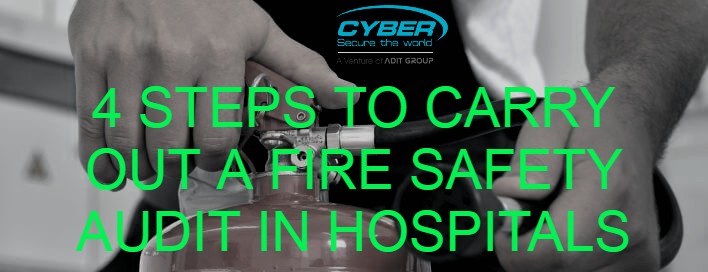4 Steps to Carry Out a Fire Safety Audit in Hospitals
Fire accidents can have devastating effects on lives and properties. As per the NCRB (National Crime Records Bureau) data, about 20,000 people die every year in India due to the fire-related accidents. In an analogous incident in 2016, a major fire broke out at The Sum Hospital in Bhubaneswar, resulting in death of as many as 22 citizens.
With an objective of preventing such accidents in future, a fire safety audit was conducted on several hospitals by the Fire and Emergency Department of the respective states in which they are located. It was revealed that more than half of the hospitals in metropolitan cities like Mumbai and Delhi lack adequate fire prevention measures.
What is a fire safety audit?
A fire safety audit is often regarded as the most effective tool for assessing the fire safety standards of a building or campus. It helps in identifying whether the place has adequate safety measures in place to prevent fire-related accidents or deal with it, in case the need arises.
Basically, it is a form of risk analysis in which a systematic investigation is carried out to determine the extent to which the present conditions allow the development and implementation of efficient fire safety policy.
How to conduct a fire safety audit?
The process of conducting a fire safety audit at a place involves the identification of fire hazards, determining the adequacy and efficiency of fire detection as well as fire-fighting systems in place, creating an audit report based on the findings, and suggesting the recommendations.
Below are the four steps explained in detail:
- Identify the fire hazards in the hospital
The first step of conducting a fire safety audit is to identify the potential causes of a fire or explosion at a place. In case of hospital, it can mainly due to electrical short-circuits, bursting of gas cylinders at the kitchen, unattended cooking, malfunctioning of heating equipment, unauthorised smoking inside the premises etc.
Also, the people who are at risk needs to be identified (patients, doctors, nurses etc. in this case).
- Determine the adequacy and efficiency of fire-alarm systems
Next, the availability and adequacy of fire-alarm systems need to be determined. A drill should be conducted to evaluate whether the installed systems are able to correctly determine the smoke and create an alarm to warn the occupants inside the hospital.
Also, the availability of suitable fire-fighting facilities, emergency escape routes, and the training of staff to fight with fire, in case the need arises, needs to be evaluated.
- Create an audit report based on the findings
After the audit, the team members need to compile their findings into an audit report. It should include the details of audited areas, the potential chances and hazards of a fire accident, availability and efficiency of fire-fighting techniques etc.
- Suggest the recommendations
The final step of conducting a fire safety audit involves the publishing of the audit report and listing down the recommendations, if any, along with the areas that need improvement. The audit report should also be able to tell how safe or equipped the premises are in case a fire breaks out.
Conducting fire safety audits may take some time and efforts, but they can provide worthwhile results as far as the safety of a hospital is concerned. It also triggers proactive safety measures that can help prevent an unwanted accident in future.
As one of the leading manufacturers of fire detection systems in India, Cyber Group can help you beef up the fire-safety standards of your residential or commercial premises with advanced technological solutions.

